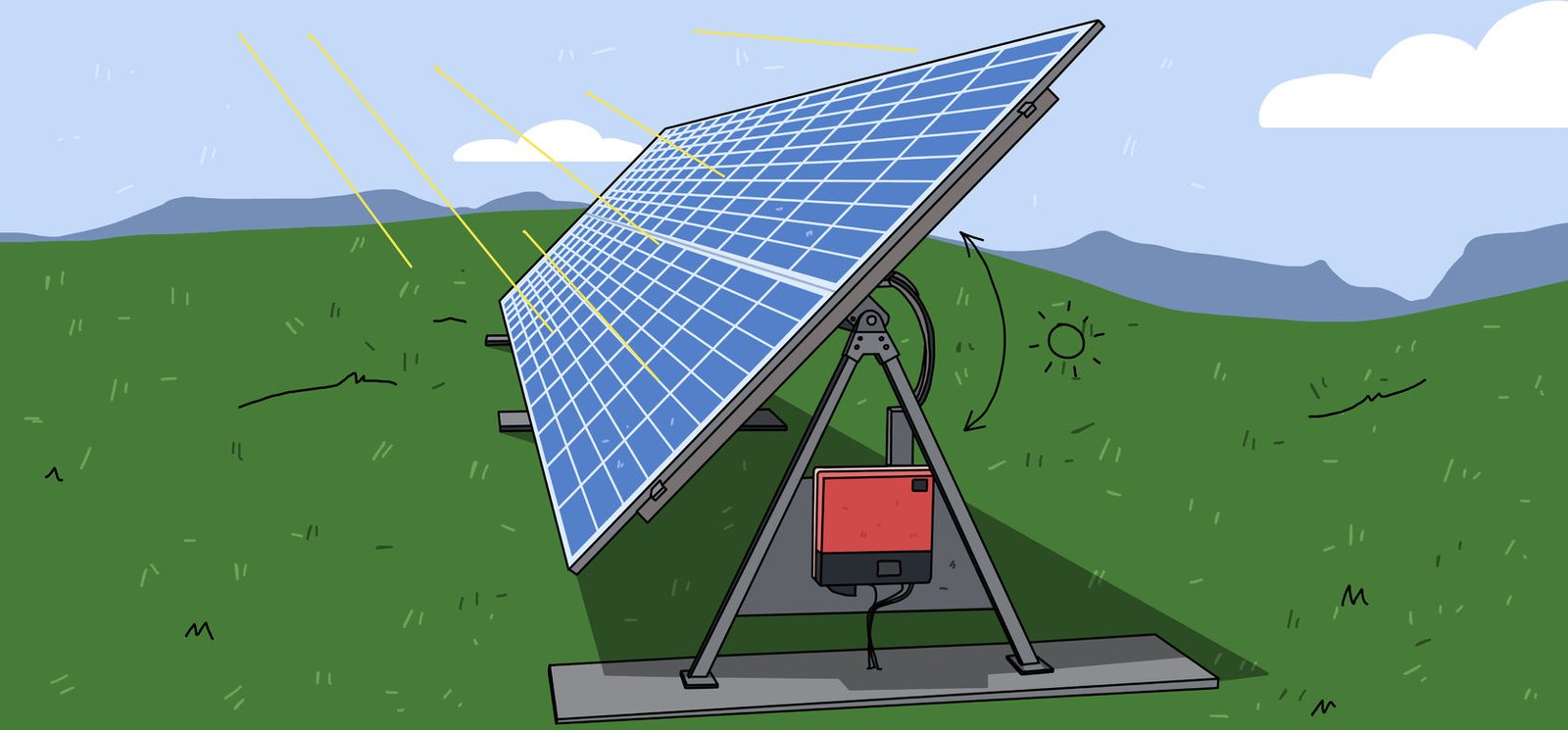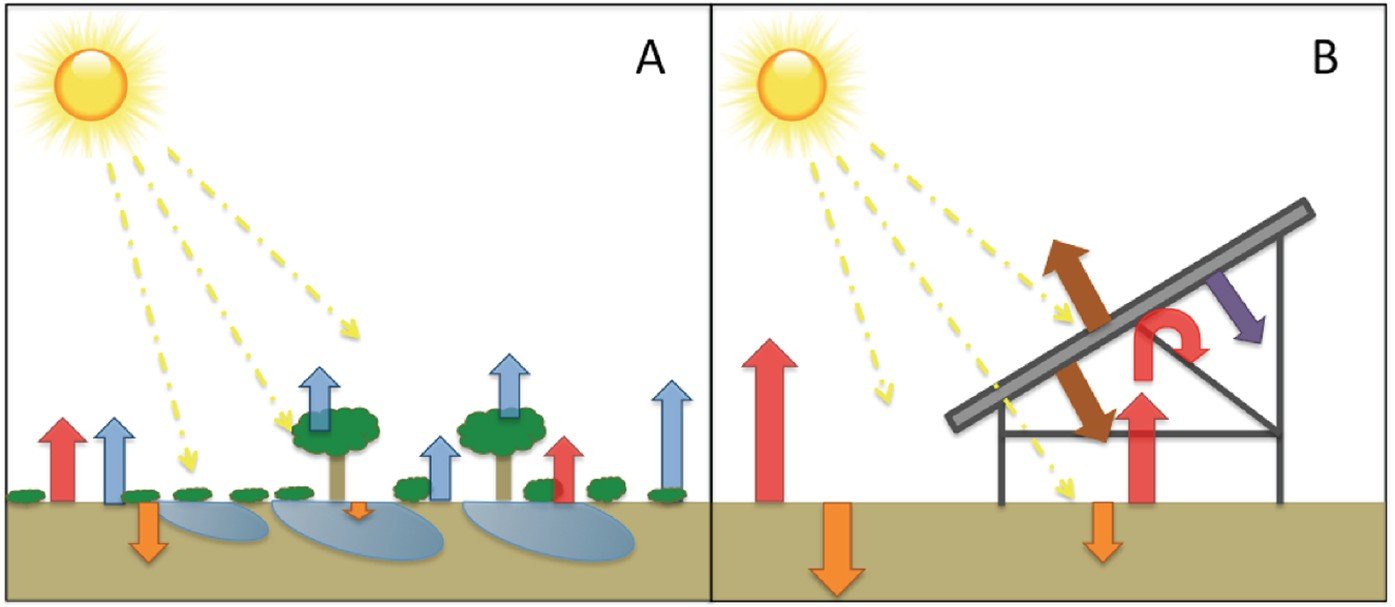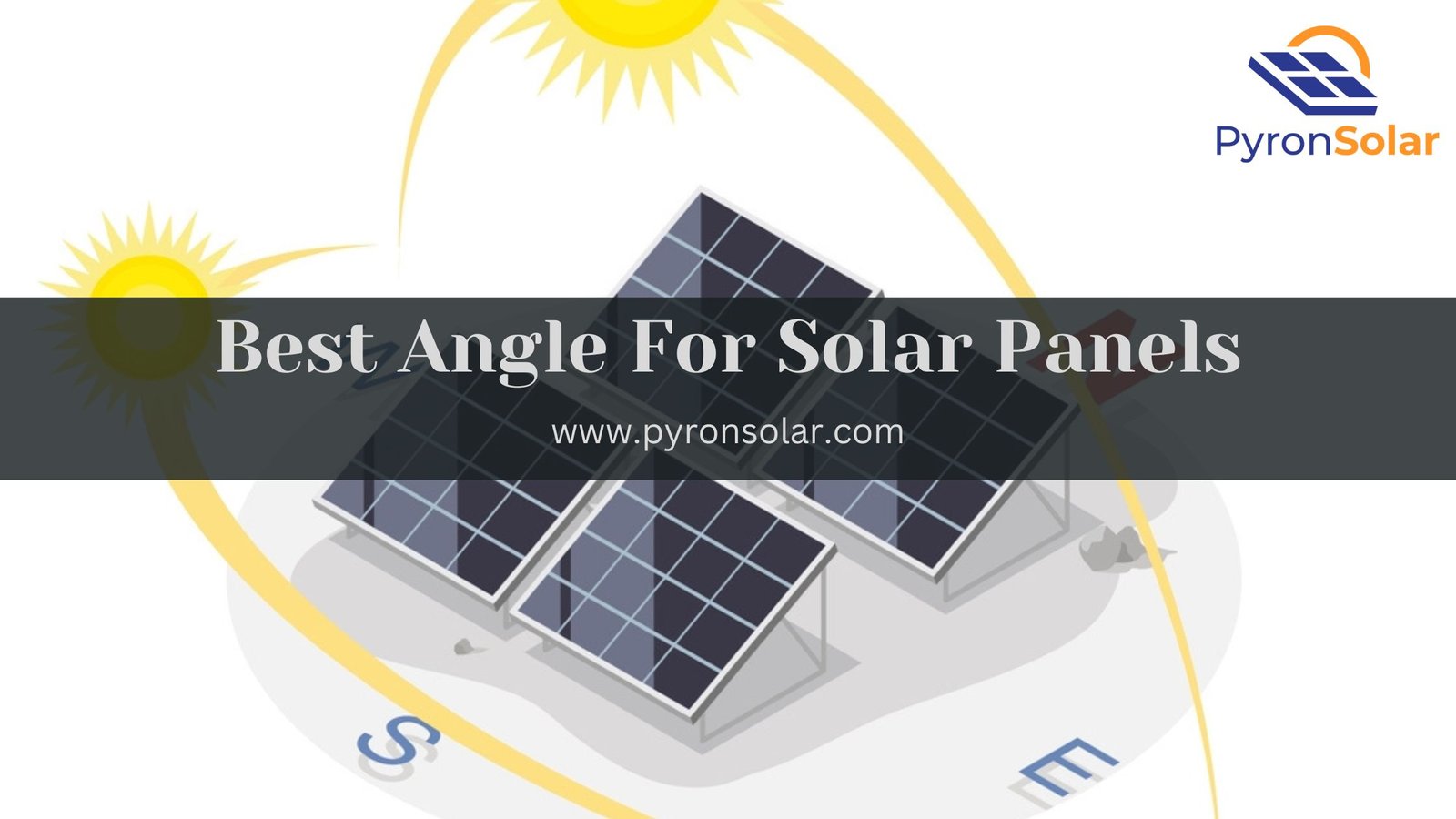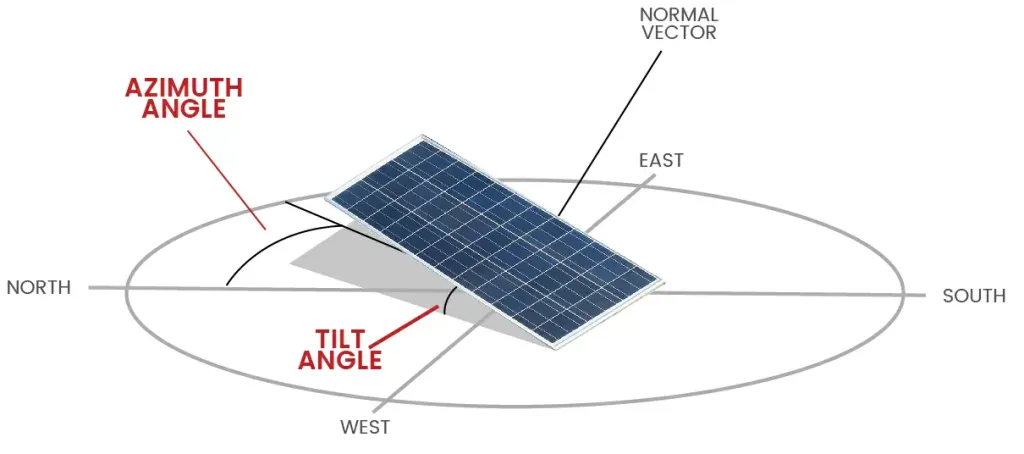“The sun rises in the east, reaches midday, sitting vertically in the sky, and sets in the west.” This proverb gives the impression that understanding the sun’s motions is simple. The sun’s movement is a little more complicated than that, however. It passes across the sky differently depending on where you live and the time of year because of the earth’s eccentric orbit and natural tilt.
Determining the best angle for solar panels is crucial for maximizing their efficiency and energy production. The optimal angle allows the panels to capture the most sunlight throughout the year, improving the overall performance of your solar energy system. Usually, the ideal angle falls between 30 and 45 degrees. The best angle for solar panels is typically equal to the latitude of your location. This means if you live at a latitude of 30 degrees, your solar panels should be tilted at a 30-degree angle.
In this article, I have examined the implications of the sun’s shifting position for solar energy generation and how to arrange your solar panels for optimum performance. We will find out how to find the best angle for solar panels according to your specific location, the seasonal adjustments you can make to enhance efficiency, and how factors like roof orientation and shading affect panel performance.
What is Solar Panel Angle?
Solar panel angle is another term for the vertical tilt of your solar panels. A solar system does not incline if it is parallel to the ground. It is at a 90° angle if erect and parallel to the floor.
Your solar panel’s angle depends on two elements- latitude and season, which can decide how much solar electricity you produce.
You may increase the amount of solar electricity generated by optimizing and changing the tilt of your solar panels following these variables.
What is Ideal Solar Panel Tilt Angle For Your Latitude?
The tilt angle grows with latitude; therefore, the farther your home is located from the equator, the larger the tilt angle should be.
For instance, the sun rises higher in the sky in states with lower latitudes (such as Arizona and Hawaii). A soft tilt is necessary for direct sunlight to reach solar PV panels in these states.

On the other hand, the sun is lower in the sky in higher latitude states, including Minnesota and Oregon. In addition to receiving the most sunlight in those states, solar photovoltaic panels must be positioned at higher tilt angles.
What Factors Affect the Optimum Solar Panel Angle?
The ideal angle of your solar panels will change depending on various factors. The following factors should be taken into account when choosing the ideal tilt for your solar array:
Latitude
Most solar panels are set at an angle that maximizes the amount of sunlight reaching the area. The best angle for installing solar panels on a roof facing south is between 30 and 45 degrees for most property owners in the United States.
You may guarantee that you will get the highest annual average output from your solar power system by tilting your solar panels to the same angle as the latitude of the residence (pointing your panels at that average location).
Roof Orientation and Tilt
Since many roofs will have slopes between 30 and 40 degrees, solar panels can sit flush against the ceiling while still producing enough electricity to generate profitable returns. Every property is different, and there needs to be a universal chart for where to put solar panels. It would be great if everyone had a roof angled precisely at the same angle as their latitude.

Traditional racking solutions must position panels at a better tilt if you’re trying to put solar panels on a steep roof. You could lay your panels flat against the roof because the vertical angle of your roof may already be greater than the ideal angle for production.
Low-angle roofs will also present challenges when installing solar panels. You might need specialized racking to tilt the panels at the right angle. It will produce less electricity if panels are installed flush against these kinds of roofs, resulting in lower solar savings.
Solar contractors would typically use racking solutions that mount your panels at an ideal angle in the event of a flat roof. The size of your system may be constrained even though this enables your panels to face the light more directly.
If you need more space or stagger the rows of panels out on the roof, tilting panels up will result in the panels shadowing one another. Because of this, you cannot install as many panels as possible if the solar panels are flat with the surface.
Season/Period
Installing solar panels at a steeper angle than your latitude- ideally, around 60 degrees- can help offset productivity dips during winter in the northern hemisphere since the sun is low regarding the horizon. By doing this, you are positioning your panels to operate more effectively in the winter, as the sun will shine more clearly on them from a lower point in the sky.
Additionally, mounting panels at a lower angle can be detrimental because snow cannot readily fall off your array. As a result, there will continue to be snow cover and less electricity will be produced.
Changing the angle of your solar panels twice a year in the spring and autumn is another technique to lessen seasonal variance in production. A system at a latitude of 40 degrees can see a notable energy boost of roughly 4%. Suppose you’re curious about when to tilt your solar panels.
In that case, I suggest tilting them to the winter angle around September 15 and, afterward, tilting them to the spring and summer angles about March 15.
Which is More Important: The Orientation or Angle of the Solar Panel?
Although the angle of your solar panel matters, the orientation they face will be the most crucial element in how much electricity they produce. As previously said, the sun is always in the southern half of the sky in the northern hemisphere; hence for optimal outcomes, solar panels must face south (especially if you live in the northern hemisphere).
Even if it results in the best tilt, installing solar panels in a less-than-ideal orientation is wrong. In Boston, for instance, a solar array-oriented 30 degrees south will produce more power than one oriented 42 degrees north.
Here we have a detailed video to find the exact angel at your particular place:-
Optimal Solar Panel Orientation Angle Calculation
Solar panels should generally be more vertical in the winter to take advantage of the low winter light and more inclined in the summer to enhance production. Here are two quick ways to determine your latitude’s estimated solar panel tilt angle calculator for your location.
In winter, add 15 degrees to your latitude; in summer, deduct 15 degrees from your latitude to determine the ideal tilt angle. For instance, the perfect tilt angle for your solar panels during the winter is 34 + 15 = 49° if your latitude is 34°. On the other hand, the summer’s ideal tilt angle would be 34 – 15 = 19°.
- Calculation Approach 2
This is an enhancement to the standard approach that produces superior outcomes. By multiplying the latitude by 0.9 and then by 29°, this method determines the ideal tilt angle for solar panels during winter. The tilt angle in the 34° latitude case example above will be (34 * 0.9) + 29 = 59.6°.
The hottest midday sun during the short winter days is very well captured by this angle, which would be 10° steeper than the standard approach. The tilt angle is determined for the summer by dividing the latitude by 0.9 and then 23.5°.
In the case mentioned earlier, this angle would’ve been (34 * 0.9) – 23.5 = 7.1°. During the spring and fall, 2.5° is deducted to achieve the best tilt angles.
Frequently Asked Questions:-
- What degree of tilt should solar panels have?
In winter, add 15 degrees to your latitude; in summer, reduce 15 degrees from your latitude to determine the ideal tilt angle. For instance, the ideal tilt angle for your solar panels during the winter is 34 + 15 = 49° if your latitude is 34°.
- Are solar panels affected by angle?
The inclination angle of solar panels has an impact on their efficiency. It would help if you modified the angle based on latitude and season to get the most power out of a PV system.
- Why is mounting solar panels at the same angle as your latitude a reasonable rule of thumb?
For most households, installing solar panels at an angle close to or equal to your home’s latitude is excellent. Usually, this angle falls between 30 and 45 degrees. By doing this, you can be sure your house will receive the solar power system’s annual average production at its highest level.
- Which direction is ideal for solar panels?
South is the ideal orientation for solar panels since it will obtain the most direct sunlight because the sun is always located in the southern half of the sky (in the northern hemisphere).
- Explain the solar panel tilt angle formula.
Solar Panel Tilt Angle = Latitude x 0,87 + 3,1. Calculating the inclination angle between the panel and the floor would be beneficial. Therefore, a panel tilted at 0 degrees represents full horizontal positioning. A 90-degree panel tilt means complete vertical orientation.
- Does the direction of solar panels matter?
Just as crucial as the type of solar panel utilized in a specific circumstance is the positioning and orientation of solar panels. While some solar panels, like the one above, follow the sun, others always maintain their angle. A solar panel’s orientation has a significant role in determining how much power it will produce.
- Can solar panels be mounted horizontally or vertically?
Solar panels can be mounted vertically may surprise some people because horizontal solar panels are far too prevalent. Yes, vertically installing solar panels is not only doable but may also be viable in some circumstances.
- Which is better for solar panels, east or west?
South, A solar panel should preferably face true south to provide the ultimate power. Although homes with an east or west-facing roof will lose solar panel angle efficiency relative to a south-facing roof by about 15%, roofs that face southwest and southeast are also assumed to be quite helpful.
Conclusion
As I have mentioned, solar systems are placed over a range of inclination angles to meet the various roof pitches found on residences, saving homeowners money. The inclination angle of solar panels has an impact on their efficiency. It would help if you modified the solar panel angle by latitude and season to get the most power out of a PV system.
Real-world situations frequently involve set roof angles, leaving no room for the solar systems to be tilted or adjusted. With this, I will let you choose wisely.
Ray is an avid reader and writer with over 25 years of experience serving various domestic and multinational private and public energy companies in the USA.


